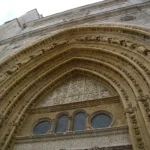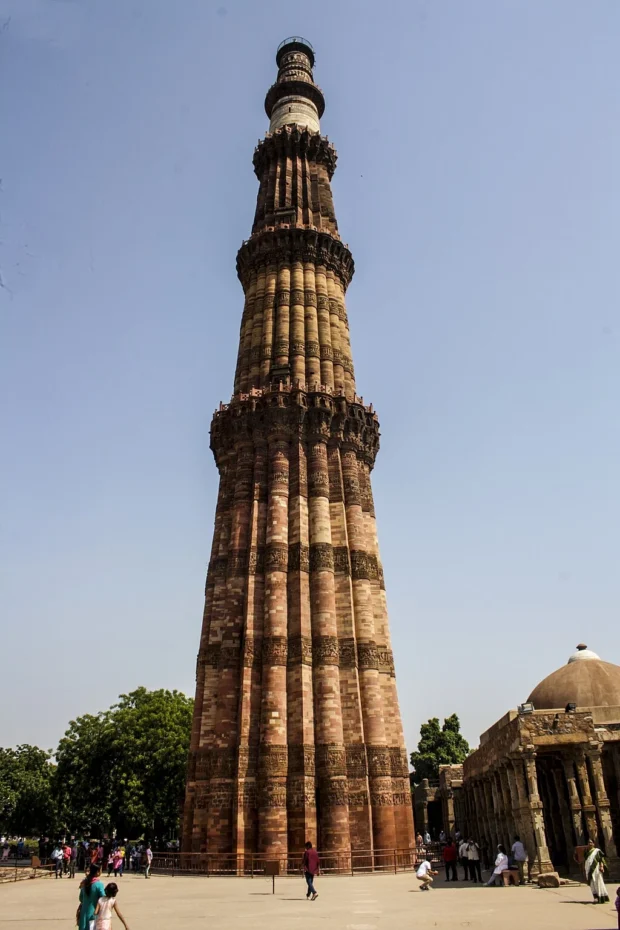Delhi, India, holds a treasure trove of architectural wonders, among which the Qutub Minar stands tall as a testament to medieval craftsmanship and historical significance. Visitors drawn to this iconic monument find themselves stepping into a world where intricate stone carvings meet soaring height, embodying centuries of architectural evolution and cultural fusion. Whether you arrive eager to capture its striking profile through your lens or to absorb the stories etched into its sandstone surface, Qutub Minar offers a captivating glimpse into Delhi’s layered past.
Table of Contents
To deepen your understanding of Delhi’s rich history and vibrant culture, explore How to Experience Delhi India with History Food and Culture.
Getting to Qutub Minar: Routes and Transport
Situated in the Mehrauli area of South Delhi, Qutub Minar is easily accessible from central points like Connaught Place and the Indira Gandhi International Airport. For those arriving by metro, the nearest station is Qutub Minar Metro Station on the Yellow Line, a mere five-minute auto-rickshaw ride away. From the airport, taxis or app-based cabs offer a straightforward 20-30 minute journey depending on traffic conditions. If you prefer the railway network, the Hazrat Nizamuddin Railway Station lies roughly 10 kilometers from the minaret, connecting long-distance travelers with local transit options.
For visitors choosing to stay nearby, the area around Mehrauli and Saket features various guest houses and boutique accommodations that provide comfortable bases within walking or short drive distance from the monument.
Architectural Brilliance and Historical Importance
Commissioned in 1193 by Qutb-ud-din Aibak, the founder of the Delhi Sultanate, Qutub Minar marks a critical moment in the Islamic architectural narrative of India. Rising to a height of approximately 73 meters, it is the tallest brick minaret in the world. The tower’s tapering cylindrical form comprises five distinct stories, each separated by intricately designed balconies that project delicately from the structure.
Its walls are adorned with a mix of Arabic inscriptions and geometric patterns, reflecting the fusion of Islamic artistry with local craftsmanship. Interestingly, the architectural style evolved during its construction, with later additions made by subsequent rulers like Iltutmish, who completed the upper stories after Aibak’s untimely death. The use of red sandstone and marble not only contributes to its stamina but also accents the textural contrast that draws architectural photographers.
Qutub Minar also stands as a symbol of the beginning of Muslim rule in India, making it an essential study in historical transitions and fortification legacies across the region. It is a precursor to other monumental minarets and mosque complexes seen throughout the Indian subcontinent.
Best Times and Visitor Tips for a Comfortable Visit
To fully appreciate Qutub Minar’s grandeur, timing your visit can enhance your experience. Visiting early in the morning allows for cooler temperatures and softer light – ideal for photography enthusiasts aiming to capture fine architectural details without harsh shadows. Weekdays, especially outside major Indian public holidays, tend to be less crowded, providing a more contemplative atmosphere.
The monument opens daily from sunrise to sunset, typically around 7 AM to 5 PM, but it’s wise to check ahead during festival seasons or for any conservation-related closures. While the surrounding Qutub complex invites leisurely strolls among ancient ruins and lush gardens, guided tours are recommended to uncover lesser-known stories and symbolic motifs often overlooked by casual observers.
Tour Reservations and Access Requirements
Entry to Qutub Minar requires a ticket that can be purchased at the site. Indian citizens pay a nominal fee, while foreign tourists pay a higher entrance charge. Group tours can be arranged through official online portals or local travel agencies, offering enriching narratives led by knowledgeable guides. Photography is allowed, though drone usage and climbing the minaret are strictly prohibited for safety and preservation reasons.
The Archaeological Survey of India oversees the site and ensures ongoing conservation. For the most accurate and updated information, including ticket prices and any special exhibitions, visit the official site by clicking on Archaeological Survey of India.
Nearby Attractions and Culinary Delights
After admiring Qutub Minar, visitors can delight in exploring adjacent historical sites such as the Iron Pillar, known for its rust-resistant composition, and the Quwwat-ul-Islam Mosque, which features some of the earliest Islamic architectural embellishments in India.
For those intrigued by regional flavors, the nearby area offers a range of eateries serving traditional Delhi street food and Mughlai cuisine. From spicy chaat to succulent kebabs, these culinary experiences bring a taste of the city’s vibrant cultural mosaic. Local markets provide additional opportunities for photography and observing daily life, ideal for those fascinated by urban textures and human interactions.
Understanding Qutub Minar Through Architectural Lens
Qutub Minar is more than a towering landmark; it is a layered artifact of design philosophy and material craftsmanship. Its vertical emphasis and ornate balconies are reminiscent of Persian minaret forms yet adapted to local seismic and climatic demands. Each carving-from calligraphic verses to floral motifs-reflects skilled artisanship and serves a didactic purpose, narrating religious and political themes.
To complement your visit to Qutub Minar, consider strolling to India Gate to witness another side of Delhi’s historic and cultural tapestry.
For architectural photography enthusiasts, the play of light and shadow along its fluted surfaces invites multiple interpretations and compositions throughout the day. The structure’s resilience against time and climate further provides a compelling case study in architectural conservation. Visitors and scholars alike may find themselves drawn to the minaret’s enduring symbolism and the subtle dialogues it maintains with the surrounding ruins and cityscape.

- Qutub Minar, Delhi 09 by Indrajit Das on Wikimedia Commons – cc by-sa 4.0
